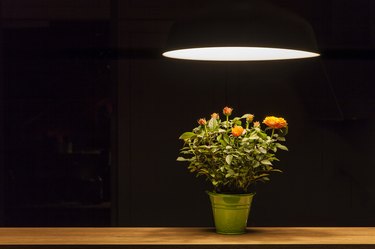Winter can be tough on all of us. Cold, dry air probably doesn't make you feel your best, and it's not great for your houseplants either. They need some extra TLC to make it through a long, cold winter. With a little luck and a lot of light, you and your plants will be thriving by spring.

Video of the Day
1. Relocate Plants From Window Sills
It seems counterintuitive to move plants away from your window sills; after all, that's where they have the best access to light, right? However, if you have older windows, cold air probably comes through during winter. Most plants will do better if they're moved further into the house when the weather changes.
Video of the Day

2. Adjust and Monitor the Humidity
Your skin may need extra moisturizer in the dry air during the winter. Your plants may also need an extra boost of moisture to counter the drop in humidity that happens during a cold winter. One option is to buy a cheap hygrometer, which monitors humidity. Use humidifiers to keep your home's humidity in the 40 to 60 percent range, which is comfortable for many houseplants.
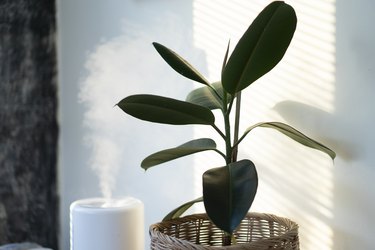
3. Move Plants Away From Heaters
Your plants won't flourish next to cold windows, but they won't do much better if they're too close to heat sources. A plant that sits near a radiator or heating duct will generally dry out and die before spring arrives. When your heat is on high, take note of where you feel drafts of hot air and then move your plants out of the path.
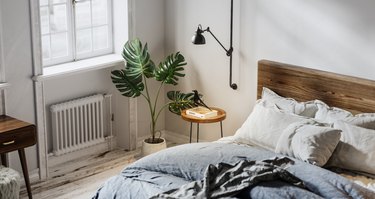
4. Water Plants While You're Away
Before leaving home for a holiday visit or winter getaway, make arrangements to keep your plants watered. Don't assume that they'll be fine without water because it's winter. Place slow-release water spikes into the soil. Alternatively, if you have a relatively low-maintenance houseplant in a pot with a drainage hole in the bottom, set the pot in a shallow dish of water before leaving home.
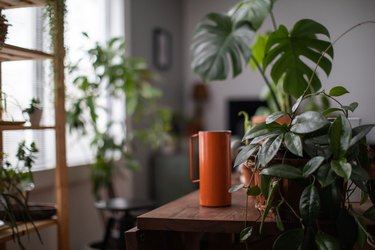
5. Avoid Fertilizer Until Spring
Your plants can survive during the winter, but they generally won't develop much new growth during the cold months. Think of them as being in a kind of hibernation state. As such, they probably don't need food before spring. Hold off on fertilizing plants until the weather turns warmer.

6. Turn Plants on Schedule
There's less sunlight during winter, which means it's important to take advantage of all the natural light you can. Your plants will grow unevenly if only one side is exposed to sunlight for a long time. Rotating your plants occasionally guarantees that all sides get equal sun exposure. Every week or two, give every one of your plants a quarter turn. Just make sure to turn them all in the same direction each time!

7. Cluster Plants That Love Humidity
Plants that are native to tropical climates can survive in your decidedly nontropical home, but they'll suffer without the high level of humidity they crave. Cluster these plants together during winter. As water evaporates from one plant, it creates humidity that helps its fellow plants. Set a small dish of water in the middle of the cluster.
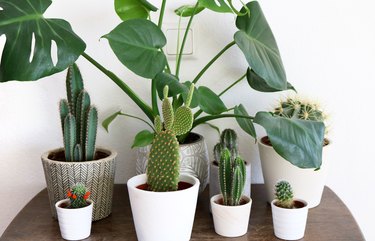
8. Pull Back Your Watering Schedule
Because the air is drying during winter, some people mistakenly assume that it means their plants are thirstier than normal. Especially if you're careful about keeping up the humidity, your plants will probably need less water during winter than they do the rest of the year. Instead of watering plants according to a set schedule, get in the habit of pressing a finger into the soil and only watering the plant if the soil is dry.
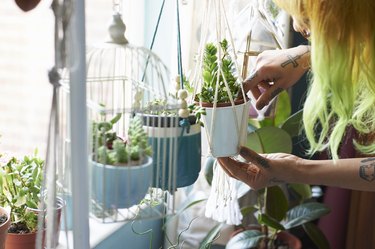
9. Watch Plants for Insects
Your home is warm and cozy, and all the neighborhood insects are dying to get inside. Pests can infest and destroy houseplants even in the winter. This is especially likely if you normally keep plants outdoors and only bring them in for winter. Regularly inspect plants for any signs of insect activity.
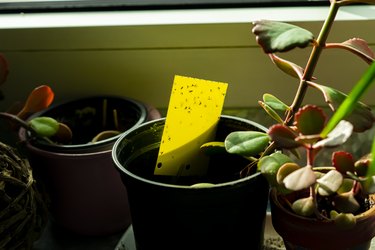
10. Consider Faux Sunlight
Some people flock to tanning beds or buy SAD lamps in winter, desperate to get some extra light when the days are so dark. Your plants may benefit from additional light too. If you keep plants in rooms that are dim all winter, pick up some grow light bulbs that are designed especially for indoor plants. Stick a bulb in an existing lamp and give your plants and yourself some much-needed light therapy.
